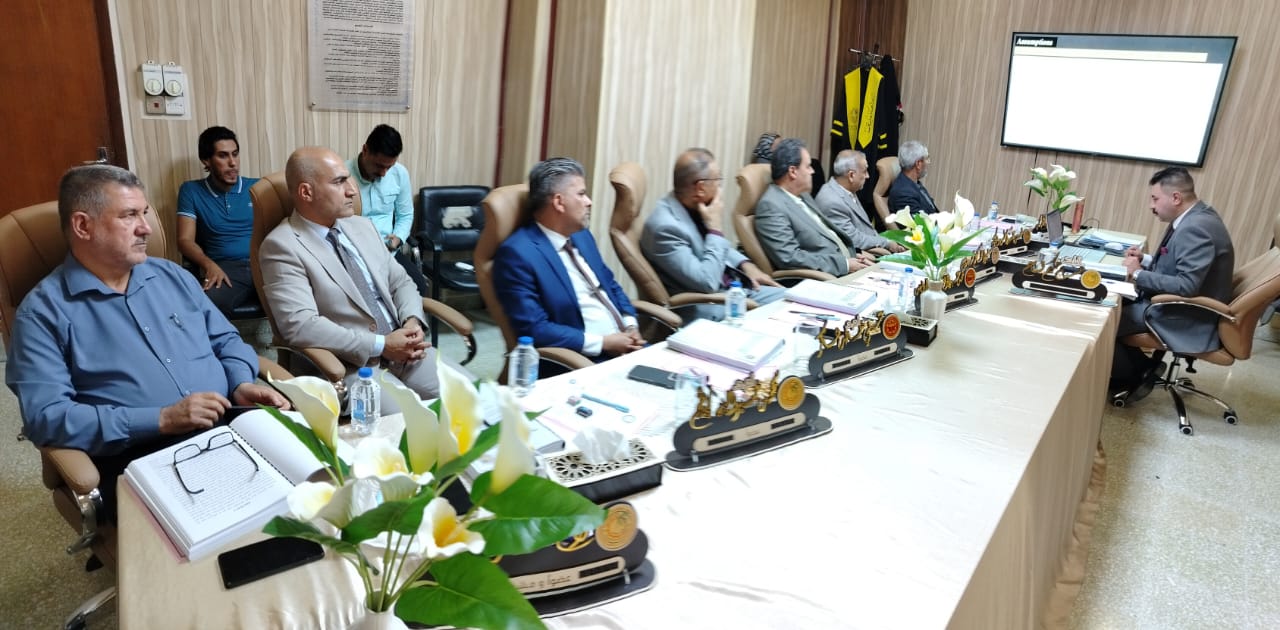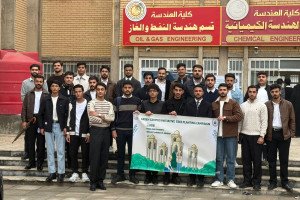The doctoral thesis of the student Hussam Hakim Qasim from the College of Engineering, University of Basra, Department of Mechanical Engineering, entitled Simulation and Design of a Solar Chimney with a PCM Layer to Cool Buildings, was discussed and includes Solar collectors have been developed and are an effective tool for converting solar energy and using it in multiple applications. Since the soil temperature is almost constant and is considered lower than the ambient air temperature in hot seasons, it can be used for cooling purposes, considering the weather conditions of the study area and its physical characteristics. The current study was conducted in Basrah city, Iraq, at 47.749° and 30.568° latitude and longitude, respectively, and with the solar chimney facing south. A numerical and experimental study was carried out, and thecontinuity, momentum, and energy equations which are the governing equations were resolved. The solar chimney and the room were simulated in the presence and absence of a phase change material (PCM) on June 1, 2023, using the flexible package ANSYS-Fluent-2021/R2 using the finite volume method. For the experimental work, the device was designed and built to fit the best variables obtained from theoretical simulations. The effect of different tilt angles of the solar chimney (α = 30°, 45°, and 60°), the air gap of the solar chimney (gab = 10, 15, and 20) cm, PCM basin thickness (tPCM= 2, 3, 4, and 5) cm, different heat exchanger diameters (D = 7.62, 10.16, and 15.24) cm, different burial depths of the heat exchanger (Z = 1, 2, and 3) m, different inlet velocities (v) of the pipe is half, one, one and a half and two m/s, and different locations of the inlet room (upper, mid, and lower) were studied. The results were presented in the form of contours of streamlines, temperature distribution, and velocity, and the curve of the absorber plate's mean temperature, temperature of the entrance and exit of the solar chimney, velocity outlet from the solar chimney over time, rate of solar radiation striking the absorber plate, air change per hour (ACH), PCM melting rate (liquid fraction or melting fraction), PCM average temperature, soil temperature, air temperature along the pipe, and pipe outlet temperature. A theoretical comparison was made with the theoretical and experimental results of various researchers using the ANSYS-Fluent 2021/R2 program, and it showed excellent agreement. Additionally, the experimental results of the current work were compared, and their results were entered into the ANSYS-Fluent program, demonstrating very good agreement. The most important results obtained, for the theoretical part, are: the best inlet velocity for the pipe is 1 m/s, and changing the diameter minimally impacts the inlet velocity. The temperature of the air inlet into the pipe becomes close to 3 m down in the soil. The maximum difference between the pipe's inlet and outlet temperatures is 10 °C at a depth of 3 m, the velocity inlet of 1 m/s, and a diameter of 7.62 cm. At the tilt angle of the solar chimney of 30° and the air gap of 15 cm without PCM, the best ventilation rate of 54.0275 per hour was obtained, as was the highest average temperature of the absorber plate, which reached 350.95 K at 12 p.m. The location of the air inlet opening into the room at the bottom gives the room the room the highest ventilation rate. When PCM was added to the solar chimney with a basin thickness of 4 cm, a tilt angle of 30°, and an air gap of 15 cm, the highest temperature of the absorber plate was obtained, reaching 357.861 K, the highest PCM melting (liquid fraction), the highest PCM temperature, and the highest air change per hour (ACH). For the practical side, the variation in pipe air temperature between the inlet and outlet is approximately 12 °C, 3 m below the surface and a diameter of 7.62 cm on September 30 and October 15, 2023. At a thickness of 4 cm for the PCM basin, an angle of 30°, and an air gap of 15 cm, the PCM converted into the liquid phase after noon, and the highest rate of air change reached 37 per hour on September 30, 2023.

.jpg)






